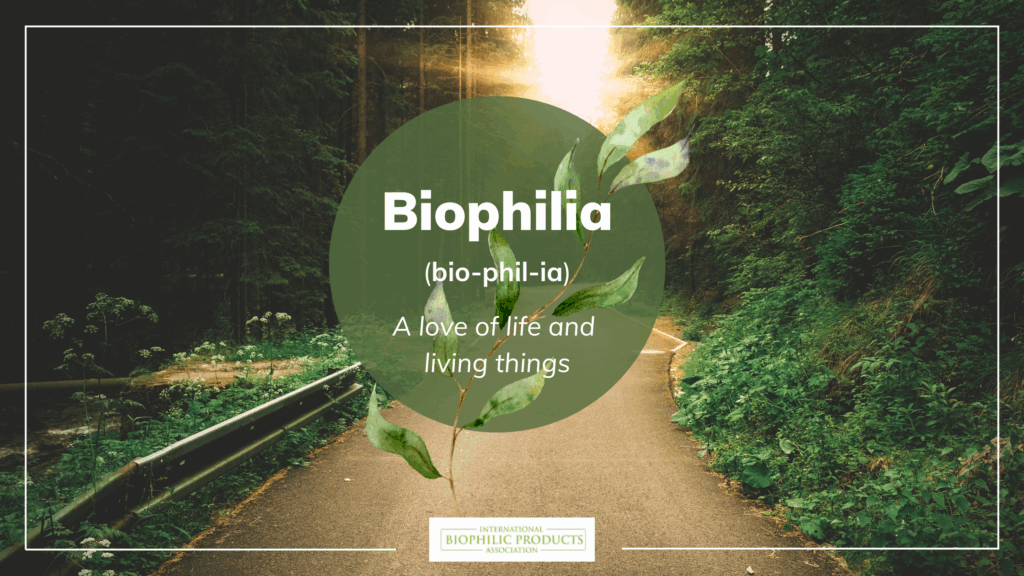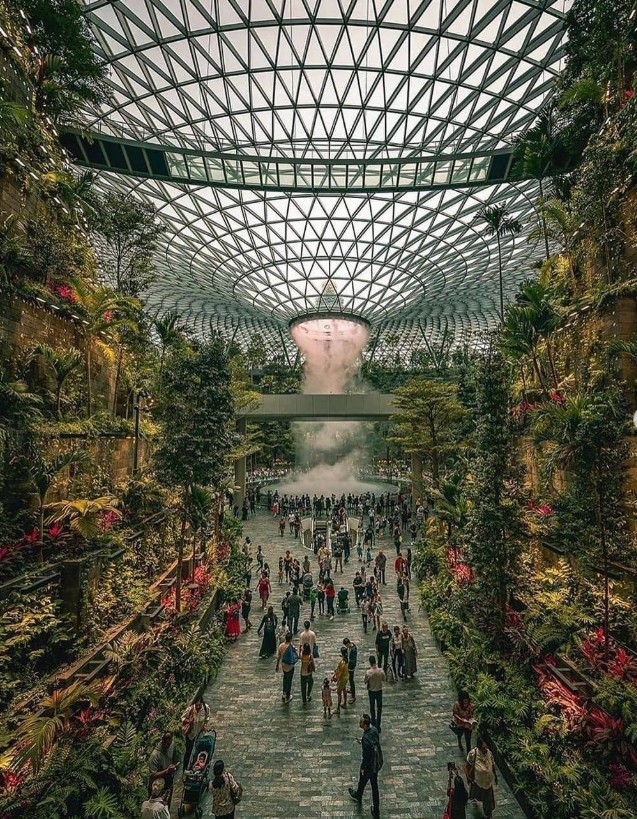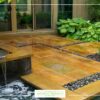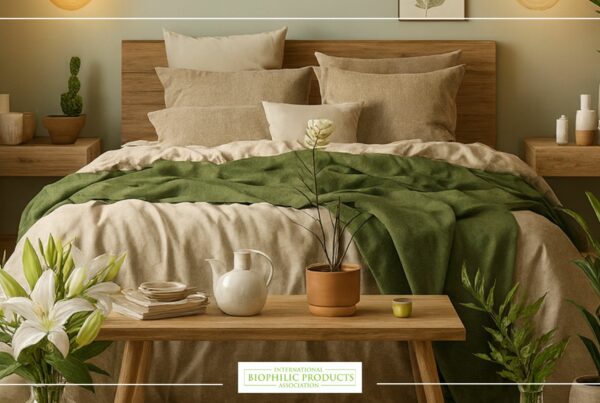
Understanding biophilia: nature, humanity, and well-Being
Have you ever felt an inexplicable calm wash over you when surrounded by forests, flowers, or the soothing sound of flowing water? Or found yourself longing for a weekend getaway, craving the fresh air and vibrant colors of nature? You’re not alone. This innate pull toward natural environments is rooted in the concept of biophilia, which suggests humans have an inherent connection to the natural world.
In an era of rapid urbanization, appreciating and embracing this deep bond with nature has never been more relevant. The Biophilia Hypothesis contends that our well-being, creativity, and even our behavior are strongly influenced by our interactions with nature. By the end of this article, you’ll understand the profound impact nature has on mental health and daily life, and learn practical ways to incorporate biophilic principles into your own spaces for a happier, more fulfilling lifestyle.
“The Biophilia Hypothesis contends that our well-being, creativity, and even our behavior are strongly influenced by our interactions with nature.”
The human relationship with nature
Our connection with nature is both physical and emotional. Numerous studies show that time spent outdoors helps reduce stress and fosters a sense of belonging. From improved mood to enhanced mental clarity, contact with natural surroundings provides an essential framework for psychological health.
Yet as cities expand and green spaces shrink, it’s easy to become disconnected from the natural world. Recognizing this innate bond is the first step toward reintroducing nature into our daily lives—be it through indoor plants, outdoor walks, or community green initiatives.
Indigenous perspectives on the human-nature connection
Indigenous communities around the world offer valuable insights into a more holistic view of nature. For many of these cultures, land is not just a resource but a living entity deserving respect and stewardship. Their stories, rituals, and sustainable practices remind us of a more balanced approach, where ecological harmony is a priority rather than an afterthought.
By learning from Indigenous perspectives, we can reframe our relationship with the environment. Instead of viewing nature as separate or exploitable, we see ourselves as part of an interconnected network, one that relies on mutual respect for long-term sustainability and well-being.
Biophilia and conservation
Recognizing our innate biophilic tendencies can galvanize conservation efforts. When people feel emotionally drawn to nature, they are more likely to protect it. This can manifest in everyday choices, like reducing plastic use or supporting reforestation projects; and in larger initiatives that drive policy change.
Key Benefits of fostering biophilia for conservation:
Heightened Environmental Awareness: people who interact with nature regularly are likely to notice ecological changes.
Community Engagement: shared green projects (e.g., tree planting) build a collective sense of responsibility.
Positive Behavioral Shifts: feeling connected to nature encourages lifestyles that reduce environmental impact.
Biophilia and technology
While technology often pulls us indoors, it can also bridge the gap between our digital and natural lives. From smartphone apps that encourage outdoor exploration to virtual reality programs that simulate natural environments, there are numerous ways to integrate biophilic principles into modern tech.
Ideas for nature-focused technology:
Mindfulness Apps: Incorporate nature sounds or visual elements to help users relax.
Outdoor Discovery Platforms: Reward users for completing nature-based activities or hikes.
Green Design in Software: Use nature-inspired colors and patterns in user interfaces to subtly evoke calm and connection.
Nature and health
Mounting research confirms what many have sensed intuitively: interacting with nature is a powerful driver of better health (it’s an original summary reflecting the wider body of biophilia and well-being research cited throughout the Human Spaces: The Global Impact of Biophilic Design in the Workplace report, alongside various other academic studies).
Green spaces can reduce anxiety, alleviate depression, and even improve cognitive functioning. For those living in dense urban settings, incorporating plants at home or visiting local parks can significantly enhance both mental and physical well-being.
Health benefits of regular nature exposure:
Mindfulness Apps: incorporate nature sounds or visual elements to help users relax.
Outdoor Discovery Platforms: reward users for completing nature-based activities or hikes.
Green Design in Software: use nature-inspired colors and patterns in user interfaces to subtly evoke calm and connection.
Embracing the biophilia hypothesis with natural materials
One accessible way to deepen our connection to nature is through natural materials in interior design and architecture. Elements like wood, stone, and plant fibers not only add texture and warmth but also ground us in the natural world.
Practical tips for using natural materials:
Wood accents: consider adding wooden furniture or wall paneling to create a warm, rustic feel.
Stone details: incorporate slate or river stone backsplashes, countertops, or decorative pieces to evoke earthy calm.
Textured fabrics: choose linens or cotton weaves that resemble natural textures, reinforcing the sense of organic comfort.
Biophilic design: bring in natural light
Natural light is more than just a visual enhancement, it’s a powerful way to elevate our physical, mental, and emotional well-being. By strategically introducing daylight into living and working environments, biophilic design capitalizes on our innate affinity for nature and helps us stay energized and balanced throughout the day. From a practical standpoint, maximizing natural light can reduce energy costs and reliance on artificial lighting; from a human-centric perspective, it can foster creativity, reduce stress, and even improve our sleep quality. Below are several ways to infuse more daylight into any space:
1. Use of large windows:
Opt for floor-to-ceiling windows or expansive glass walls to let in more sunlight. When possible, position them to capture the best angles of natural light throughout the day. In homes, this might mean installing windows in corners or along multiple walls, creating an immersive feeling of openness.
2. Skylights and clerestories
Skylights serve as a direct gateway for sunlight to enter spaces that might otherwise remain dim or reliant on artificial lights. Clerestory windows—placed high on walls—act similarly, bringing daylight deeper into a room without compromising privacy.
3. Open layouts
An open-concept design helps daylight travel freely, illuminating larger areas and minimizing dark corners. Removing or reducing interior walls where possible can create a bright, airy ambiance.
4. Light-reflecting surfaces
Choose neutral or brighter wall colors, and incorporate reflective surfaces like mirrors and glass decor. These surfaces bounce incoming light around a space, amplifying its brightness and creating a more uplifting atmosphere.
5. Consider window treatment
Sheer curtains, blinds that can be tilted, or other adjustable treatments give you control over sunlight’s intensity. This balance ensures your environment remains well-lit without suffering from excessive glare or overheating.
6. Integrate outdoor spaces
If you have balconies, terraces, or patios, keeping doors and windows open (weather permitting) merges indoor and outdoor realms. This seamless transition maintains abundant natural light and promotes a stronger connection to nature.
Why natural light matters
1. Boosts energy and alertness:
Exposure to bright, natural light in the morning helps regulate cortisol levels, giving you a more energized start to your day. Consistent daylight throughout work or study sessions can keep fatigue at bay, positively influencing productivity.
2. Supports optimal sleep patterns:
Natural light regulates our circadian rhythms, helping our bodies know when to be active and when to rest. By soaking up sunlight during the day, you encourage healthier melatonin production at night, resulting in better sleep quality.
3. Enhances mood and creativity:
Research links well-lit spaces with lower rates of stress, greater feelings of happiness, and improved cognitive performance. An office flooded with daylight can spark innovative thinking, while a sunlit living room can elevate mood and encourage relaxation.
4. Reduces reliance on artificial lighting:
By harnessing daylight, you cut down on electricity usage. Over time, this not only lowers utility costs but also lessens environmental impact. A daylight-filled home or office aligns with the broader sustainability goals of biophilic design.
Embracing natural light is a foundational element of biophilic design, directly impacting everything from energy use to emotional well-being. Whether through large windows, skylights, or reflective interior choices, thoughtfully planned daylight can turn even the most ordinary setting into a bright, welcoming, and healthful space.
Biophilic design in architecture
Example: In Singapore, numerous high-rise buildings incorporate large-scale living walls, transforming the skyline into a lush, garden-like environment. As a hallmark of Biophilic Design Architecture, these green façades are featured across hotels, corporate offices, and residential complexes to promote a stronger connection to nature and enhance overall occupant well-being.


Modern architecture has evolved to emphasize biophilic principles, striving to re-establish the link between people and the natural world. Beyond aesthetics, these approaches offer tangible benefits such as better air quality, reduced stress, and enhanced community well-being. By intentionally incorporating natural elements into the built environment, architects and urban planners create more sustainable, healthy, and harmonious spaces for inhabitants and ecosystems alike.
2. Living walls:
Vertical gardens, or living walls, are one of the most visible and impactful examples of biophilic architecture. By growing plants on specially designed wall systems:
- Air purification: the foliage filters harmful pollutants and produces oxygen, contributing to cleaner indoor air.
- Urban greening: these installations can bring nature into dense urban areas where traditional gardens are limited.
- Microclimate regulation: plants help insulate walls, regulating indoor temperatures and reducing energy demands.
- Visual and emotional appeal: green walls offer a dynamic, ever-changing backdrop that fosters relaxation and creativity.
Open floor plans
Shifting away from compartmentalized layouts, open floor plans allow greater interaction with natural light, air, and other people:
- Enhanced airflow: fewer interior walls promote cross-ventilation, helping stabilize indoor temperatures.
- Social connection: open spaces encourage collaboration, whether at work or at home, by removing physical barriers.
- Daylight maximization: sunlight can reach deeper into the building, reducing the need for artificial lighting during daytime hours.
- Adaptive reuse: open layouts are more versatile, allowing spaces to evolve alongside changing needs—an essential aspect of sustainable design.
Example: modern coworking hubs often employ open-plan concepts with minimal partitioning. This creates a lively, fluid environment where individuals can interact more freely while enjoying natural light streaming in through large windows.
Water features
Incorporating water elements into buildings serves both a practical and therapeutic function:
- Calming ambiance: flowing water produces soothing sounds, reducing stress and promoting mindfulness.
- Humidity regulation: indoor fountains or water walls can add moisture to dry climates, enhancing comfort for occupants and supporting plant life.
- Aesthetic value: reflective pools or ponds can be visually stunning, often acting as focal points that enrich the sensory experience.
Learn more about Aquatecture in biophilic design: blending water and architecture
Example: Some modern lobbies in corporate skyscrapers feature sculptural water installations, where gently flowing streams offer a moment of serenity in otherwise bustling city centers. Smaller-scale ideas, like tabletop fountains or wall-mounted waterfall panels, can work well in retail stores, restaurants, and offices.
Indoor-outdoor flow
A seamless connection between interior spaces and the surrounding environment is a defining hallmark of biophilic design:
- Extended living areas: large sliding doors or foldable glass walls can merge indoor rooms with outdoor patios, blending boundaries for a more immersive experience.
- Seasonal adaptation: when weather permits, spaces can be opened up for fresh air and natural sunlight, significantly reducing energy usage.
- Visual continuity: maintaining consistent flooring or color palettes helps create a smooth visual transition from inside to out.Direct Nature Access: patios, balconies, or rooftop gardens offer direct engagement with sunlight, fresh air, and greenery—even in dense urban settings.
Example: Many contemporary homes in warm climates feature retractable glass walls that fully open the living room to a deck or garden, offering an unobstructed view of lush greenery and allowing cooling breezes to flow throughout the home.
Prioritizing a sustainable future
When architects, developers, and city planners commit to biophilic design, they craft long-lasting benefits for both human communities and the broader environment:
Reduced carbon footprint: by harnessing natural light, ventilation, and living systems, buildings can lower energy consumption and greenhouse gas emissions.
Improved well-being: human health thrives when people interact regularly with natural elements.
Community engagement: parks, communal rooftops, and shared green areas invite neighbors to bond and nurture a sense of collective responsibility for local ecology.
Resilience: buildings designed with nature in mind often adapt better to environmental shifts, enhancing longevity and cost-effectiveness.
Ultimately, biophilic architecture paves the way for urban landscapes that honor nature’s rhythms and processes. In doing so, it unlocks a future where human well-being and ecological harmony flourish together—a vision that resonates with city dwellers seeking fresh air, sunlight, and thriving natural ecosystems integrated seamlessly into everyday life.
The Biophilia Hypothesis underscores our enduring bond with the natural world. Whether through green spaces, natural materials, or biophilic design principles, reconnecting with nature can profoundly impact our mental health, creativity, and overall well-being. By integrating these elements into our living and working environments, we not only nurture ourselves but also contribute to a healthier planet, ensuring that future generations can enjoy the invaluable benefits nature offers.
Whether it’s through adding a potted plant to your office or advocating for more green spaces in your city, every action counts toward rekindling our intrinsic bond with nature. Embrace biophilic design to create healthier, happier, and more sustainable spaces for everyone.











13 Comments